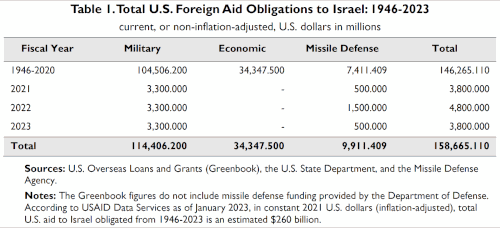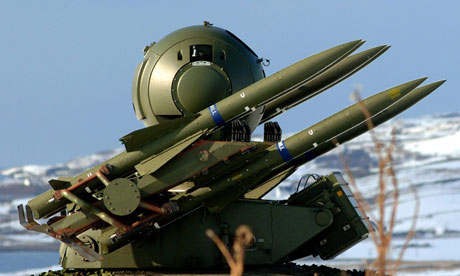United States and Israeli Relations from post WWII to the
Present
Relations
between Israel and the US since WWII have been complex, constantly waxing and
waning in their strengths. Israel owes the US for its current economic and
military strength, while the US has used Israel as a strategic ally in the
Middle East, allowing for the strategic placement of military resources. The relations
between these two nations evolved from the US support of the creation of a
Jewish homeland just after WWII and have evolved into a constant political
tradeoff that has repercussions all over the world, most importantly in Russia
and other Arab nations. The US has always attempted to help Israel resolve
conflicts in the Middle East with diplomatic solutions, but failing this the US
has almost always supported Israel in its war efforts. In recent years,
tensions have risen because of the strong support from the US for the creation
of an independent Palestinian state and for the cessation of Israeli building
projects in Palestine. However, the US still grants $3 billion in aid annually
to Israel and Israel is the largest recipient of aid from the US since WWII.
 |
| Table detailing US aid to Israel |
Israel
is a country on the Southeastern shore of the Mediterranean. It is a
representative democracy where all citizens can vote. Its capital is Jerusalem,
which is located partially inside of the Palestinian territories.
Internationally, Jerusalem is not considered part of Israel. Israel has been
occupying the Palestinian territories since 1967 after the Six Day War, and the
US does not recognize Palestine as a state. The territory of Palestine was set
aside in 1947 from the Jewish state of Israel to create a distinct Arab state.
Since that point, tensions between Arab nations and Israel regarding borders
and recognized sovereignty have been extremely high. In 1948, after the
Arab-Israeli war, Britain, France, and the US signed the Tripartite
declaration, which marked the beginning of official US/Israeli relations. The
declaration said that each nation pledged to take action to prevent the violation
of borders created after the war, oppose an arms race in the Middle East, and
have a devotion to peace and stability in the region.
 |
| Map showing location of Israel and Palestine |
In
the 1950’s, the US began providing Israel with economic aid for basic food
supplies. However, with the looming threat of influence of the Soviet Union on
Egypt, the US was forced to begin selling defensive weapons to Israel in case
of war. Later, in the Kennedy administration, the US shifted to full support of
Israel. This antagonized other countries in the Middle East, and perhaps pushed
them to the side of the Soviet Union. The US failed to contain the tension
diplomatically and was forced to begin selling offensive weapons to Israel.
Despite US pressure for peace, Israel did not want to pull out of occupied Arab
territories, especially Palestine. In order to gain attention from the US,
Egypt engaged in a war with Israel in the 70’s. The US provided intense
military support to Israel because of the Egyptian ties to the Soviet Union,
despite the fact that Egypt expelled its Soviet advisors before the war. At the
end of the war, the US pressured Israel into sparing a badly beaten Egyptian
army, thus sparking peace between Israel and Egypt and preventing Soviet intervention.
This was a major success for the US because it improved the US standing in the
region and preventing further tensions, and possibly all out war, with the
Soviet Union in the region.
 |
| The US began selling missile defense weapons to Israel |
Under
the Bush Sr. administration in the early 90’s, the US began to express its
request for Israel to abandon its policies of expansion. This further soured
US/Israeli relations that had come under strain when the previous
administration opened talks with the Palestinian Liberation Organization (PLO),
the governing body of Palestine. During the Bush administration, Israel was
still occupying several Arab states, including Palestine, where it was
conducting building projects for Jewish people. Despite this, there was
relative peace in the region. The US attempted to capitalize on this peace to
advance Arab-Israeli peace in general. Peace negotiations began in Madrid,
eventually leading to a UN resolution that improved Israel’s standing in the
UN. However, the talks did little to improve the still tense situation between
Israel and its neighbors. Under the Clinton administration in the 90’s, Israel
and the PLO officially recognized each other and the US provided more funds for
Israel anti-terror and defense efforts.
 |
| Emblem for the PLO |
As of now, the US is against the
settlement of Israelis in Palestine, because it does little to improve peace
and prevents the emergence of a Palestinian state. During the recent Bush
administration, the US always encouraged Israel to pull out of Palestine during
times of conflict, and the US still supports the creation of two states that
live side by side in peace.
 |
| Obama and PM Netenyahu in talks to promote peace in the Middle East |
Today,
the Obama administration and Secretary of State John Kerry continue to support
a two state solution to the Israeli/Arab tensions. The US continues to pressure
Israel to cease building projects and supports the idea that the PLO and Israel
work together to create a border that makes sense from a demographic perspective,
to create one Jewish state and one Arab state. The US and Israel are still
strong trading partners, and the US provides military and economic aid to
ensure that Israel continues to be a strong presence in the Middle East.
Sources: